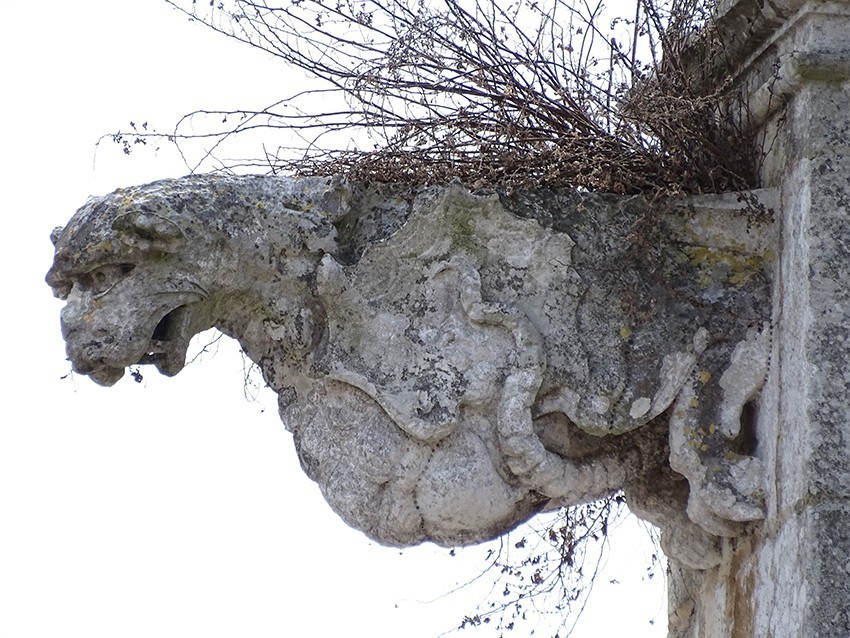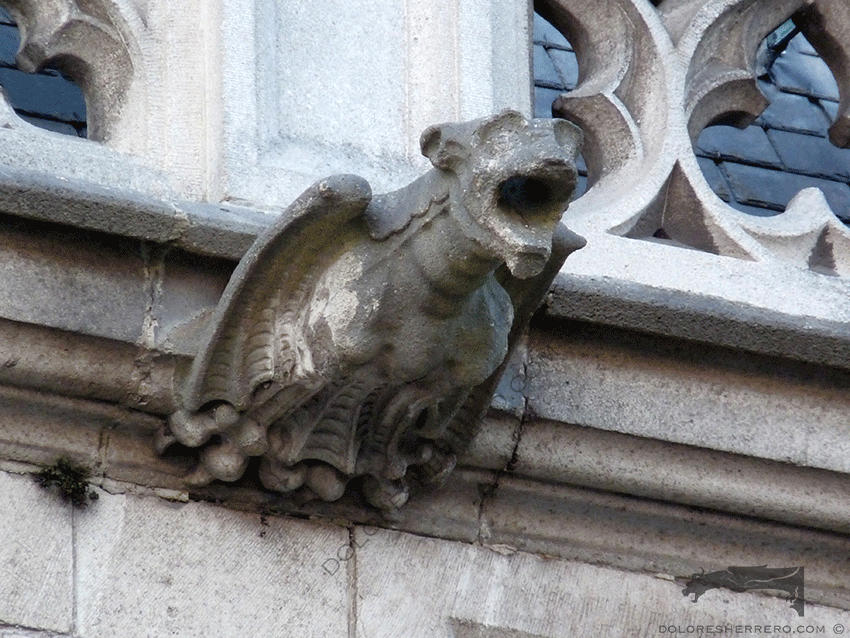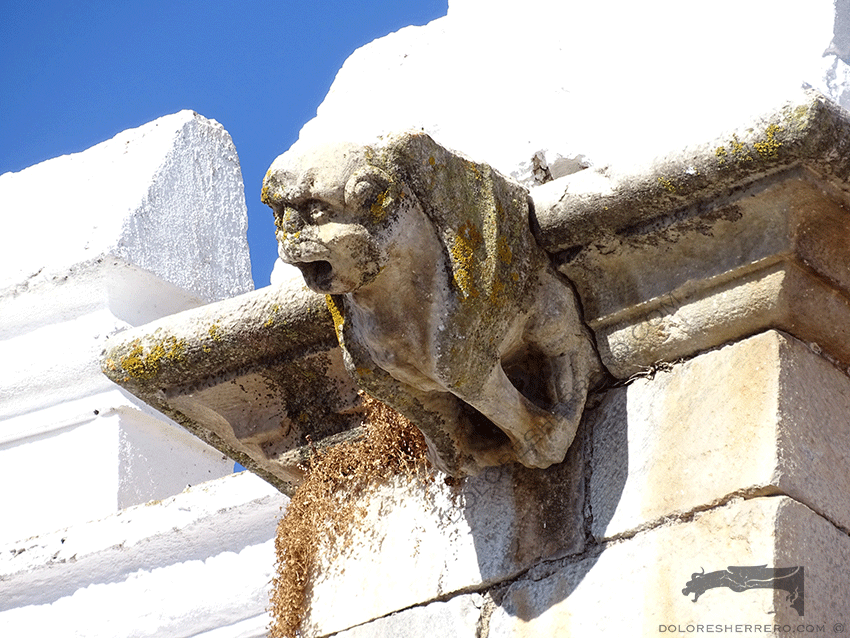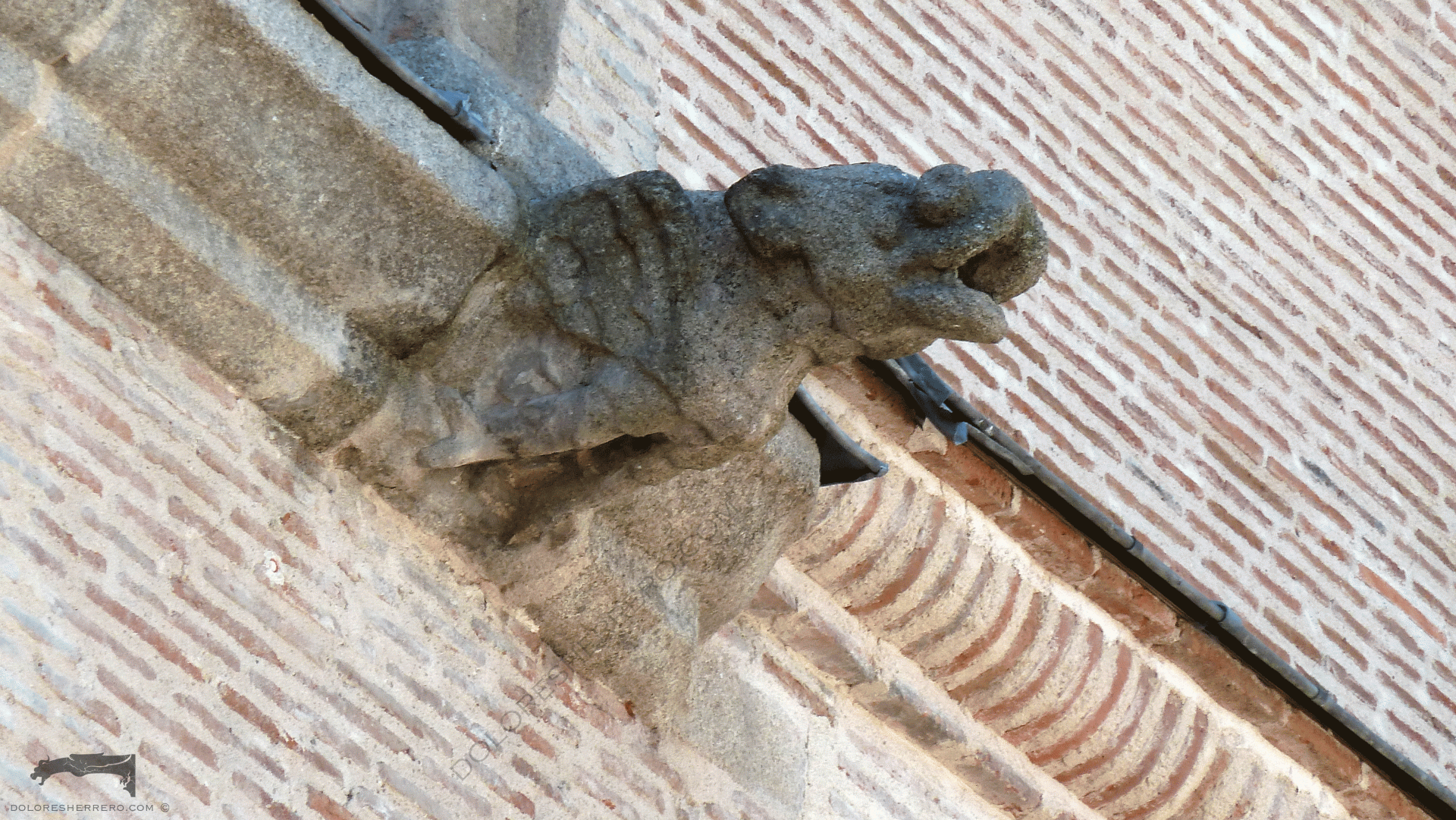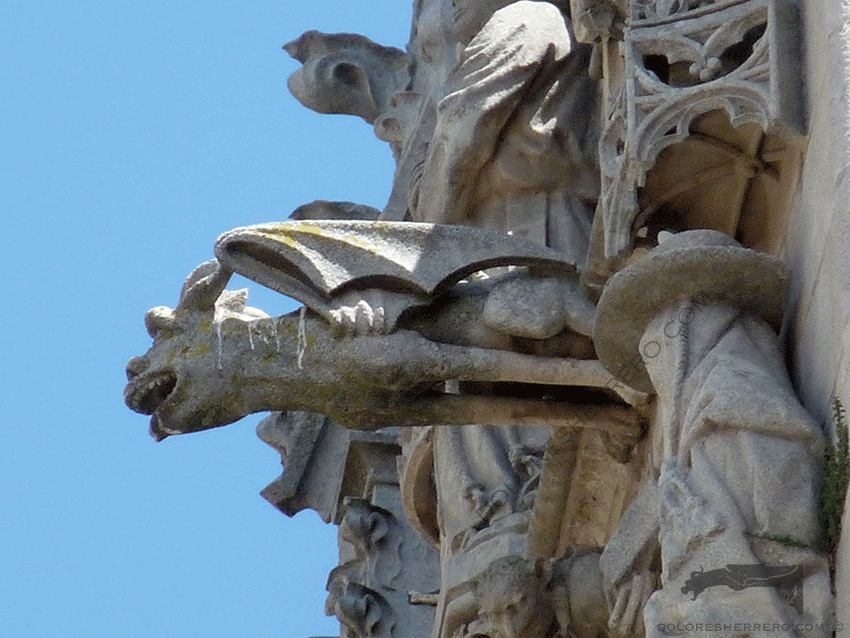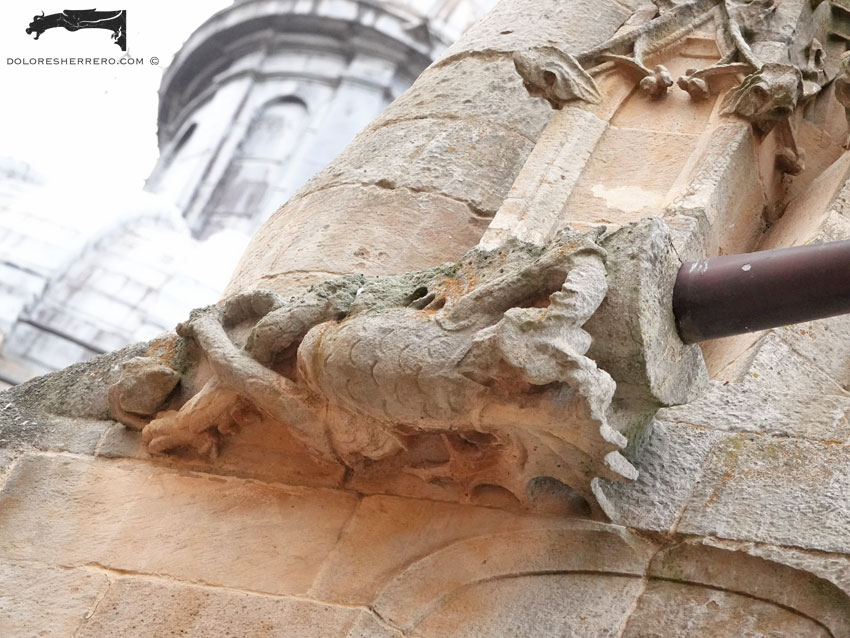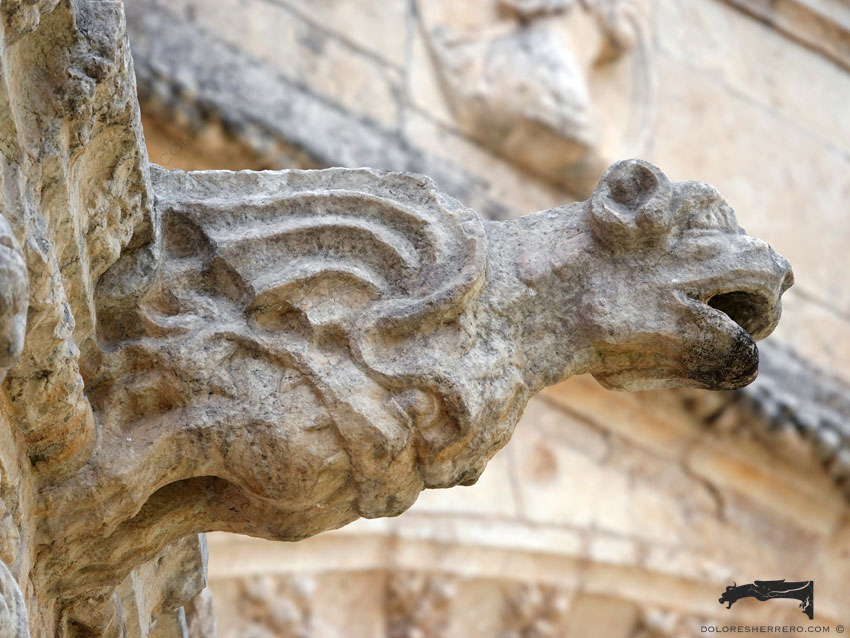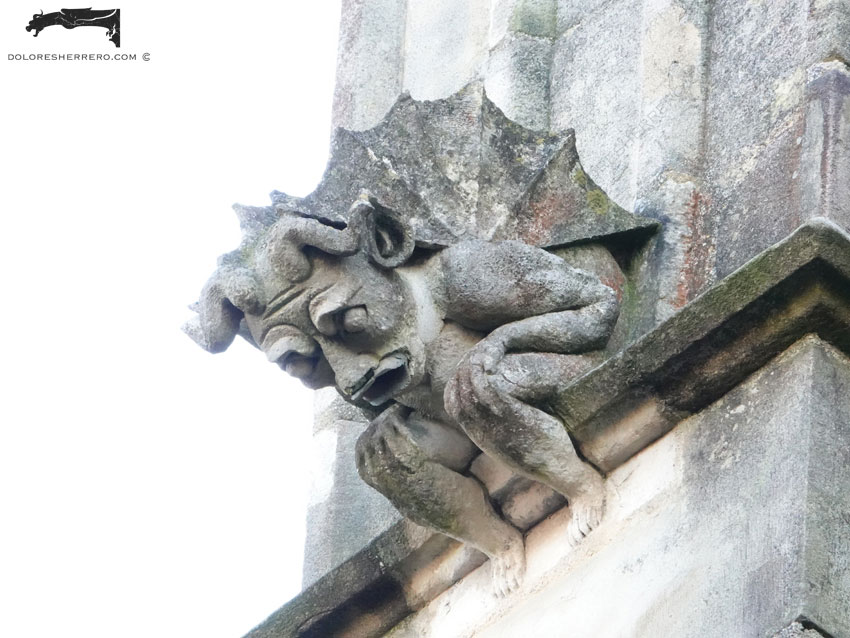Among the devil’s most fascinating features are his bat-like wings.
The association between the bat and the devil comes from the symbolism attributed to this little animal. We have already discussed this in an earlier post on depictions of fantastical beasts in gargoyles, but for now, recall that Origen of Alexandria (2nd-3rd centuries) considered the bat a symbol of heretics. In Poitou, there is a legend that Satan descended in the form of a bat into the middle of an irreverent dance, and the dancers fell one after another, killed by the mere touch of his wings. Bats are depicted in manuscripts (The El Escorial Bestiary and The Oxford Bestiary) and on choir stalls (Yuste, Poitiers). In addition the bat became the symbol of the Jewish people who “hate the light of day and love darkness”.
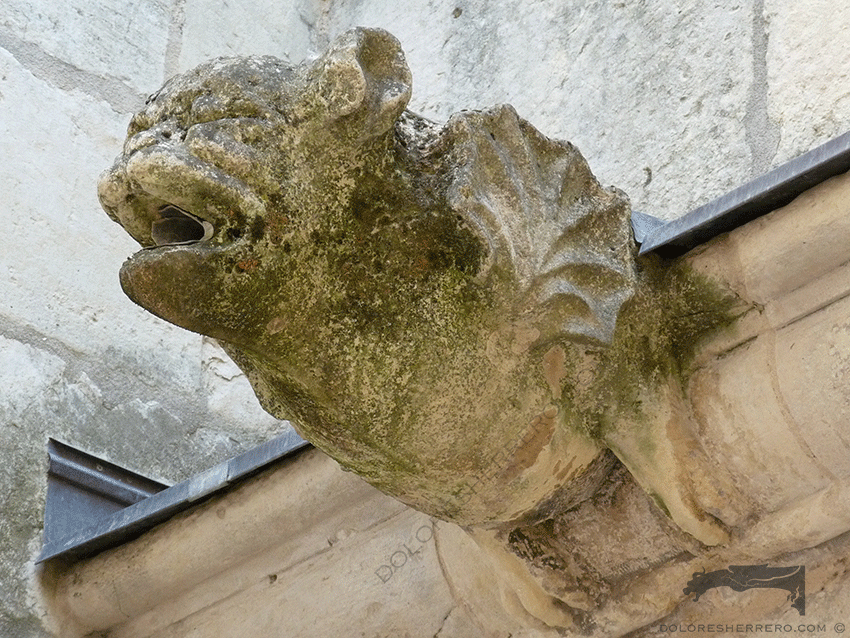
León Cathedral (Spain)
Another of the creatures that has bat-like wings is the dragon. Baltrušaitis says that the Far East is clearly a land of dragons. A drawing by Wu Tao-Zu (8th century) and a reproduction by Li Long-mien (11th to 12th centuries) both show dragons with membranous wings. In the 13th century, dragons were often depicted with bat wings and jagged crests. Men with bat-like wings were also born in these lands, as can be seen in some bronzes from the Tcheou dynasty (11th-3rd centuries BC). Most authors today admit that these wings were taken by the West from Chinese depictions of evil devils, not dragons, since Asian dragons almost never have wings. Besides dragons, the bat’s membranous wings were also depicted on griffons, basilisks, hybrid beings and sea creatures, all sinister and demonic beasts.
- Salamanca Cathedral (Spain)
- Batalha Monastery (Portugal)
In a previous post, we saw that wings are one of the features and characteristics associated with the devil, although sometimes he is depicted without them. Recall that from the 9th to the 13th centuries, the devil was also portrayed with feathered wings like those of the angels, albeit darker and shorter. Link has argued that the devil did not have bat-like wings until 1300.
Consequently, around the 14th century, the devil began to be depicted with membranous wings, like those Dante described in his Inferno. And it is precisely in Dante’s work where we find one of the most beautiful yet terrifying descriptions of the devil. The Inferno, part of his Divine Comedy, written between approximately 1304 and 1321, contains what is probably one of the first references to the devil with bat-like wings. Although Dante mentioned mythological beings, for example Cerberus (Canto VI, 21-24) and dragons (“There lay a dragon with outspreading wings, that with its breath set fire to all it met”; Canto XXV, 21-24), as well as snakes and other beings of an evil nature (“A snake with six feet leapt from the ground and flung itself over one of them”; Canto XXV, 48-51), his work is above all an essential source for demonic iconography.
His superb description of Lucifer is a literary wonder:
His mien was savage and menacing
And with his wings and nimble feet,
How horrible he suddenly seemed to me!
(Canto XXI, 31-33)
There my mind was perplexed,
To see three faces on his head.
One in front, and that was red;
The other two joined with this
Over one shoulder and another
And meeting at the crown.
The right-hand one was between white and yellow;
The left-hand one, a shade that declares
It was burnt beside the shores of the Nile.
Two large wings sprang beneath each face,
Of a size suitable for such a bird
—such sails never a boat hoisted.
Bat wings they were;
Featherless but flapping,
Causing three winds
That froze the water of the Cocytus.
Six eyes streamed with tears,
Mingled with bloody foam.
Each mouth was crushing
A sinner, as if he were flax,
Punishing the three equally.
(Canto XXXIV, 37-57).
Literature is a fundamental source for gargoyle iconography, as Dante is for images of the devil and his depiction in all the arts. The above image suggests the idea of a fallen angel, and massive bat-like wings form an essential part of the most beautiful and sublime depictions of evil. Of these, we would like to highlight the fresco in the church of St. Francis of Assisi, The Expulsion of the Devils from Arezzo (c. 1295-1300), by Giotto, which portrays devils with bat-like wings. This is a fundamental source to determine when this image of the devil emerged. Although Baltrušaitis argues that it was borrowed from Chinese winged devils, other scholars such as Ockham assert that these devils emerged from Giotto’s imagination. Perhaps we are witnessing one of those coincidences of images that arise in different places, and sometimes in the same period, as Delacampagne mentions: coincidences that are the product of certain immutable, logical, or psychological laws that merge into the literature and art of all times.
Devils with Membranous Wings
- Augustins Museum (Toulouse, France)
- Batalha Monastery (Portugal)
- Burghers’ Lodge in Bruges (Belgium)
- Church of Santa María Magdalena in Olivenza (Badajoz, Spain)
- Batalha Monastery (Portugal)
- Collegiate Church of San Antolín in Medina del Campo (Valladolid, Spain)
- Cathedral of St. Michel in Carcassonne (France)
- Burgos Cathedral (Spain)
- Aachen Cathedral (Germany)
- Brussels Cathedral (Belgium)
- Salamanca Cathedral (Spain)
- Jerónimos Monastery in Lisbon (Portugal)
- Bayonne Cathedral (France)
- Archive of the Crown of Aragon (Barcelona, Spain)

Segovia Cathedral (Spain)
Bibliography consulted
ALIGHIERI, D., Comedia. Infierno, traducción, prólogo y notas de A. Crespo, Barcelona, Editorial Seix Barral, S. A. Biblioteca Formentor, 2008.
BALTRUŠAITIS, J., La Edad Media fantástica. Antigüedades y exotismos en el arte gótico, Madrid, Ediciones Cátedra, S. A., 1987.
CHARBONNEAU-LASSAY, L., El bestiario de Cristo. El simbolismo animal en la Antigüedad y la Edad Media, Palma de Mallorca, José J. de Olañeta, Editor, 1997.
DELACAMPAGNE, A. y C., Animales extraños y fabulosos. Un bestiario fantástico en el arte, Madrid, Editorial Casariego, 2005.
LINK, L., El Diablo. Una máscara sin rostro, Madrid, Editorial Síntesis, S. A., 2002.

Doctor of Art History and researcher specializing in the study of gargoyles.
I am Dolores Herrero Ferrio, and my thesis, “An Approach to the Study of Gargoyles of Gothic Cathedrals in Castilla and León”, is dedicated to the study of these fascinating figures.
If you like gargoyles and art history, you will also enjoy my book, “The Gargoyle and Its Iconography,” a book I have written with great care for those interested in the world of gargoyles.
I have created my own Encyclopedia of Gargoyles, a Gargopedia to share with you, where you will discover all the secrets and wonders of these enigmatic sculptures.
I hope you enjoy this Gargopedia as much as I have enjoyed creating it, and remember that each gargoyle has a story to tell, and here you will discover them all.

